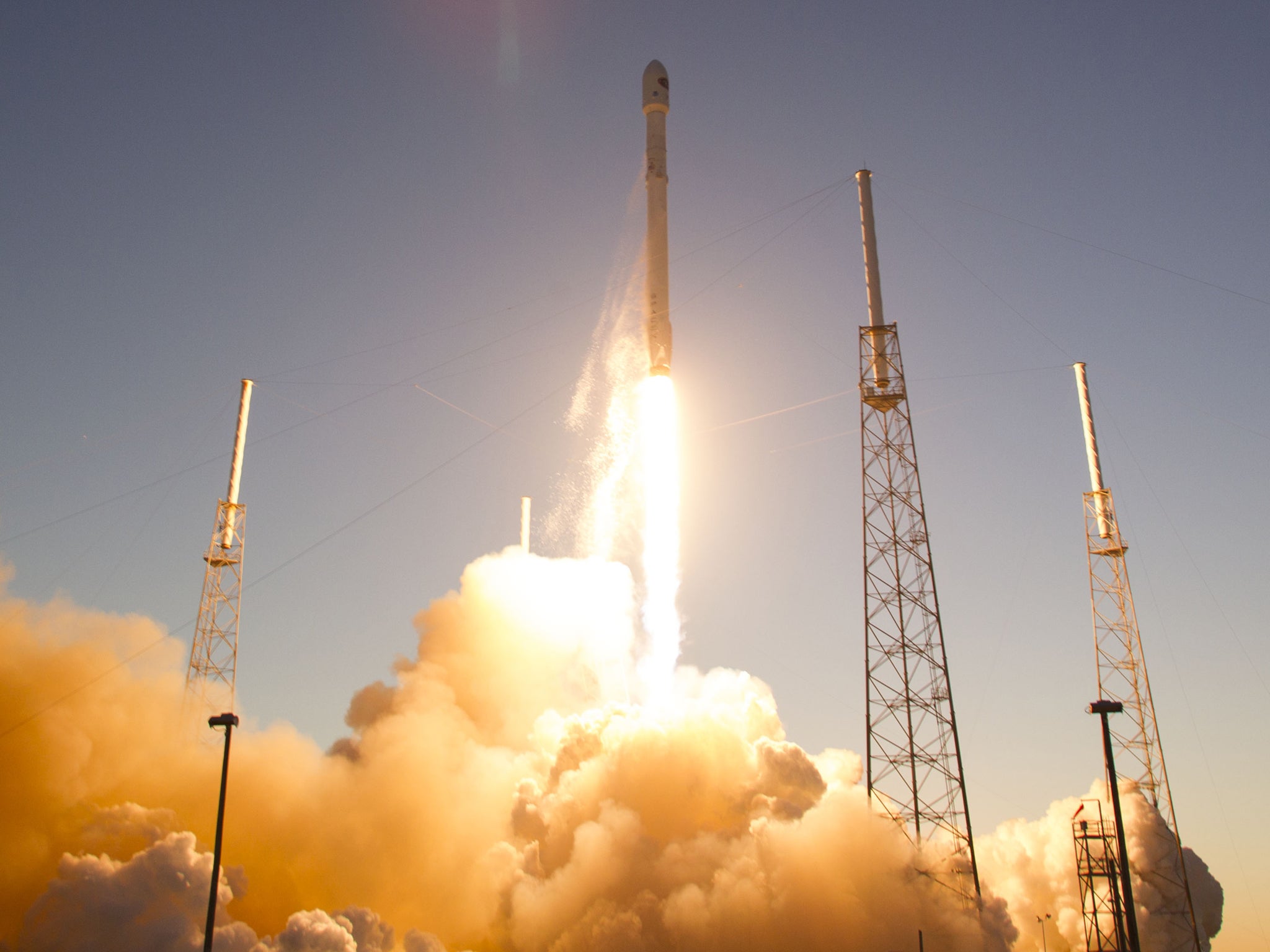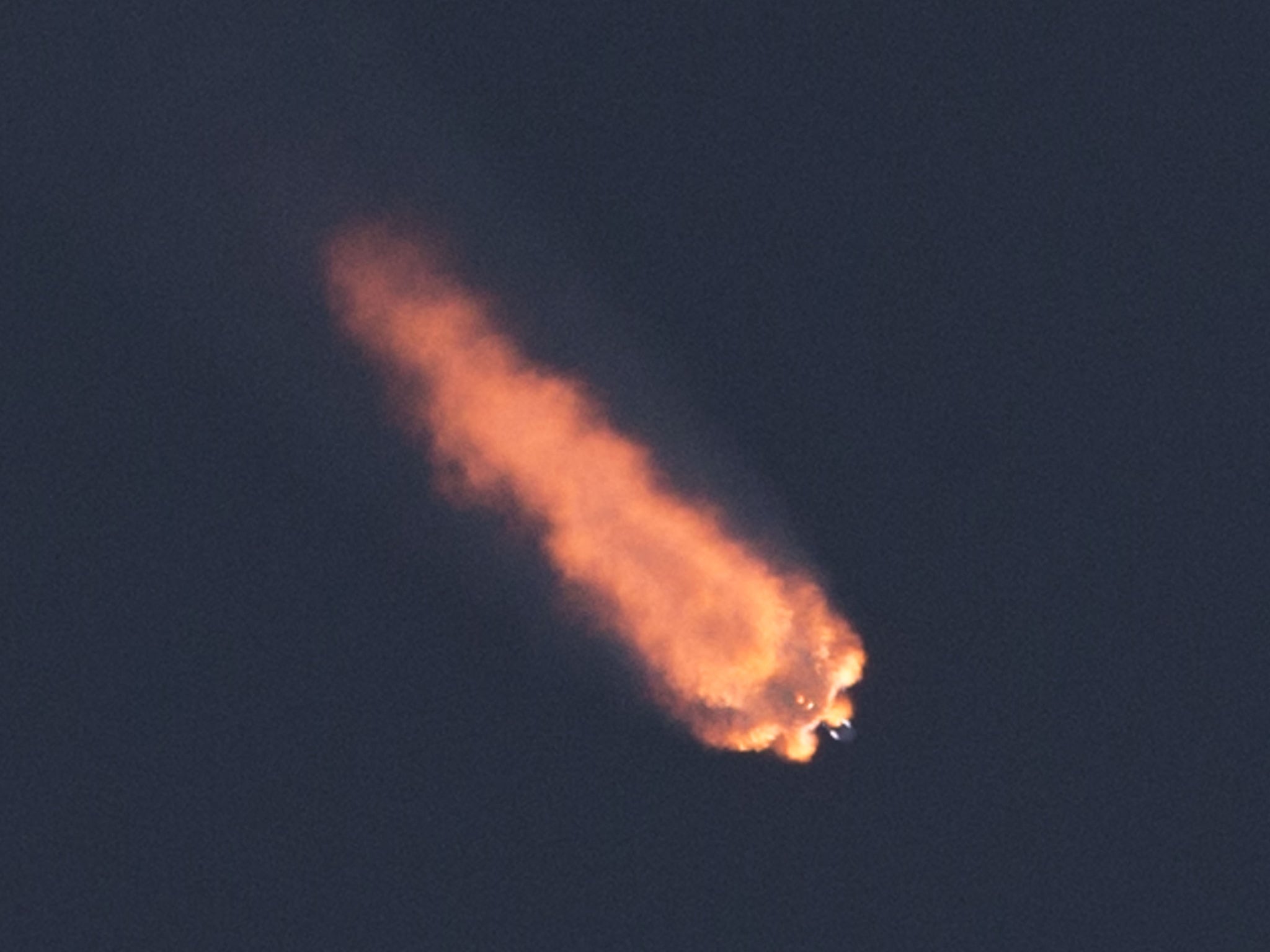SpaceX cancels rocket barge landing amid high seas, but launches DSCOVR satellite
Satellite will now act as a weather buoy for solar flares, which can disrupt radio and power on Earth

The latest attempt by SpaceX to land its reusable Falcon 9 rocket on a barge failed last night, once again being thrown off by bad weather.
The rocket carried the satellite into deep space — where it will watch solar storms and Earth, from about 1 million miles away — but the company cancelled plans to land it on a barge as it came back down, because of bad weather in the sea.
The launch had already been delayed on Sunday, by a radar problem, and by high winds on Tuesday. Though the weather at Wednesday’s launch was perfect, high seas around the barge that the rocket was scheduled to land on meant that the company instead ditched it in the sea.
Waves three stories tall were crashing over the decks, SpaceX said in a statement, and only three of the four engines on the landing pad “drone ship” were functioning.
But the rocket managed to land close to the barge and came in at an angle that would indicate that a landing would probably work in better weather, SpaceX CEO Elon Musk said.
It’s the second spectacular failure to get the rocket to park on the landing pad, after it recently came in too fast and blew up on impact.
The tests are part of the company’s plan to develop reusable rockets that will allow it to hugely reduce the cost of space travel.
But the company hailed the launch of the DSCOVR satellite as a success.
The rocket carried the Deep Space Climate Observatory, nicknamed DSCOVR. That is a $340 million observatory that has been led by Nasa, the National Oceanic and Atmospheric Administration and the Air Force.
DSCOVR replaces a 17-year-old satellite monitoring for potentially dangerous solar storms, which can disrupt GPS signals, block radio communications and impact power grids on Earth.

It will take DSCOVR 110 days to reach its operational orbit around the sun, almost 1 million miles (1.6 million km) inward from Earth, where it will serve as a weather buoy, providing about an hour's advance notice of threatening solar activity.
The satellite's original mission, championed by then-Vice President Al Gore, was to provide a near-continuous view of Earth that would be distributed via the Internet in an attempt to raise environmental awareness, much like the iconic Apollo 17 "Blue Marble" picture of Earth did in the 1970s.
The satellite, then called Triana - and lampooned as GoreSat - was due to launch on the space shuttle, but the mission was canceled.
Triana spent more than a decade in storage before it was refurbished and reborn as a solar observatory. DSCOVR also has two sensors to monitor Earth to track volcanic plumes, measure ozone and monitor droughts, flooding and fires.
It also will take pictures of Earth every two hours that will be posted on the Internet, fulfilling in part Gore's dream.
Additional reporting by Reuters
Join our commenting forum
Join thought-provoking conversations, follow other Independent readers and see their replies
Comments
Bookmark popover
Removed from bookmarks